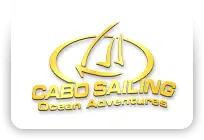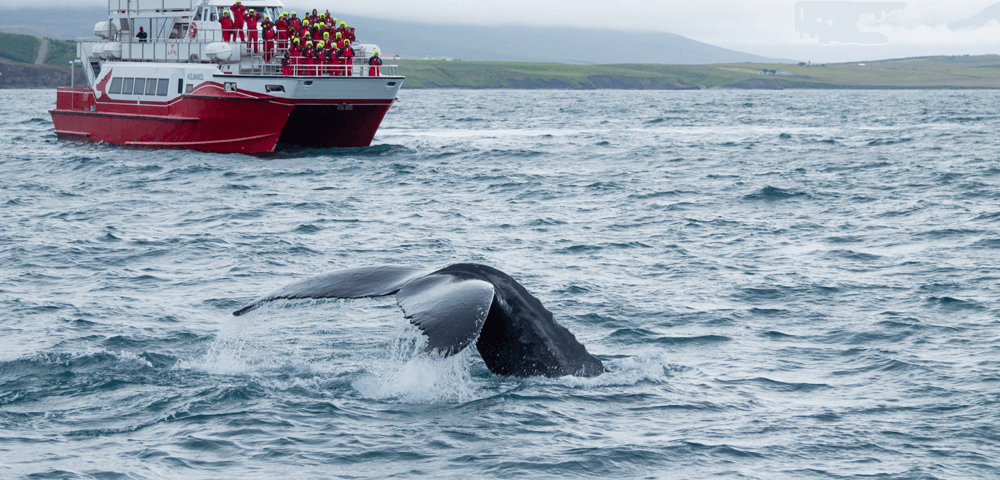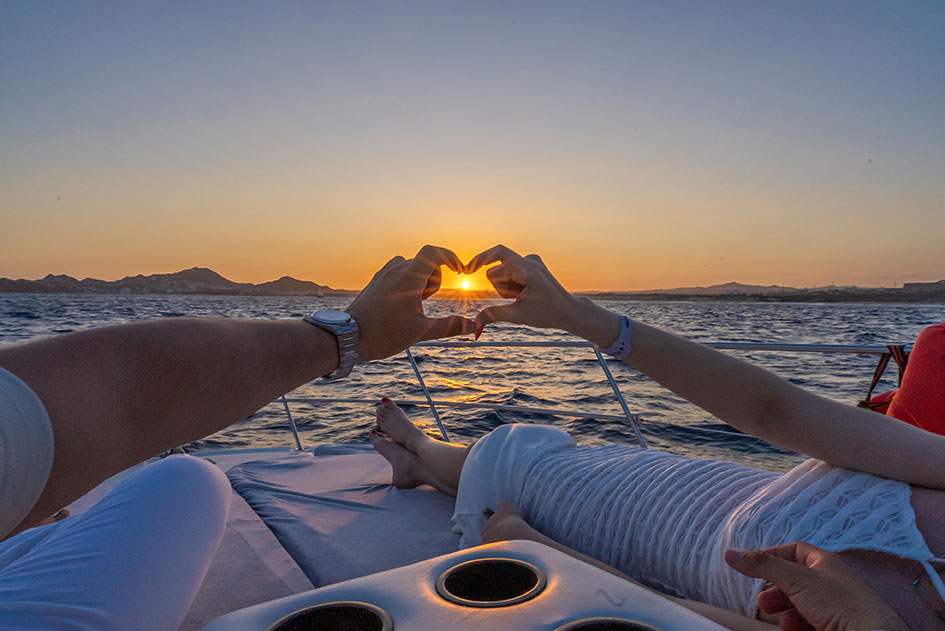The waters surrounding Cabo San Lucas are among the most spectacular places on earth to whale watch. Every year, humpbacks, gray whales, and even the elusive blue whale travel thousands of miles from the cold Arctic waters to the warm, calm seas of Baja California Sur. These gentle giants arrive to mate, give birth, and nurture their young before heading back on their long journey north.
Standing on the shores of Cabo, it is possible to spot whales breaching, tail-slapping, and even spy-hopping just beyond the waves. But the most rewarding experience happens on the water. Whale watching in Cabo San Lucas is an intimate encounter with nature. The sight of a mother humpback teaching her calf to swim or the sound of a whale’s exhale breaking the silence of the sea stays with you forever.
To witness this incredible migration at its best, planning the right trip is key. Understanding the whale-watching season, picking the right tour, and respecting marine life ensure a memorable experience.
When to Go: The Best Time for Whale Watching in Cabo San Lucas
The whale watching season in Cabo San Lucas runs from mid-December through mid-April, with peak sightings occurring in January, February, and March. During these months, the number of whales in the area reaches its highest point, and encounters become more frequent.
- December to Early January: The first whales begin arriving. Sightings are possible, but the numbers are still increasing.
- Mid-January to March: This is the prime season. Whale activity is at its peak, with frequent displays of breaching, tail-slapping, and mother-calf interactions.
- April: The season winds down, but late travelers may still catch sight of mothers guiding their calves on the journey north.
Time of day also plays a role in the experience. Mornings generally have calmer waters and clearer visibility, making them the preferred choice for those prone to seasickness. Afternoon tours offer warmer weather and golden sunlight, which is great for photographs.
Choosing the Right Whale-Watching Tour
Selecting a responsible, knowledgeable tour operator makes all the difference. Ethical whale watching respects both the whales and their habitat while providing an exceptional experience for visitors.
Key Factors to Consider
- Licensed and Certified Boats – Cabo enforces regulations to protect marine life. Choose a tour with official permits to operate whale-watching excursions. Licensed vessels must fly a distinctive flag indicating they adhere to conservation guidelines.
- Small Group Experiences – Large party boats may disrupt the whales. A smaller vessel offers a quieter, more personal encounter.
- Expert Guides – A knowledgeable marine biologist or naturalist enhances the trip, providing valuable insights about whale behaviors and conservation efforts.
- Respectful Distance – Ethical tours maintain a safe distance from whales, allowing them to move freely without stress.
Consider booking a private yacht charter for a luxurious and exclusive whale-watching experience. These charters have full control of the itinerary, offering an intimate way to witness marine life without the crowds. Cabo yacht charters provide an elegant setting to enjoy the wonders of the sea.
The Whales of Cabo: A Look at the Species You Might Encounter
Cabo San Lucas’ waters provide a habitat for various whale species, each bringing fascinating behaviors and traits for observers to enjoy.
Humpback Whales
Humpbacks are the most commonly sighted whales in Cabo. They are known for their energetic displays, often breaching out of the water or slapping their massive pectoral fins against the ocean surface. Their long migrations and distinct songs make them one of the most studied and admired whale species.
Gray Whales
Gray whales take one of the longest migrations of any mammal, traveling over 10,000 miles from Alaska to Baja. These whales often pass through Cabo but are more commonly seen in the calving lagoons of Magdalena Bay along the Pacific Coast.
Blue Whales
The elusive blue whale, the largest animal on Earth, occasionally appears in the deeper waters off Cabo. Though not as frequently spotted as humpbacks, these gentle giants are an awe-inspiring sight.
Other Marine Life
While on a whale-watching tour in Cabo San Lucas, visitors may also encounter playful dolphins, sea lions, and a variety of seabirds gliding over the waves.
Whale Behaviors to Watch For
Each whale-watching trip is unique, with different behaviors on display. Recognizing these movements adds depth to the experience.
- Breaching – A whale launches itself out of the water, creating a spectacular splash.
- Tail Slapping (Lobtailing) – Whales raise and slap their tails against the water’s surface.
- Pectoral Fin Slaps – Humpbacks extend their long fins and slap them down repeatedly.
- Spyhopping – A whale pokes its head above water to observe its surroundings.
- Fluking – The whale lifts its tail high before diving deep into the ocean.
Seeing any of these behaviors firsthand is a breathtaking reminder of the intelligence and power of these creatures.
What to Pack for a Whale-Watching Trip
Proper preparation ensures a comfortable and enjoyable excursion.
- Sunscreen and Sunglasses – The sun’s reflection on the water can be intense.
- Layers of Clothing – Mornings can be cool, but temperatures rise as the day progresses.
- Camera with Zoom Lens – Capture moments without needing to get too close.
- Binoculars – Enhance distant sightings.
- Motion Sickness Medication – For those prone to seasickness, it helps to take a preventative dose before the tour.
Packing these essentials allows travelers to focus on the experience without distractions.
Respecting the Whales: Guidelines for Responsible Watching
Whale watching is an extraordinary privilege, and respecting these animals is vital for their protection.
- Keep a Safe Distance – Do not attempt to touch or get too close to a whale.
- Stay Quiet and Observant – Avoid loud noises or sudden movements that could startle them.
- Avoid Flash Photography – Bright flashes can be disruptive to marine life.
- Support Eco-Friendly Tours – Choose operators that prioritize whale welfare over entertainment.
By following these guidelines, visitors contribute to conservation efforts that allow future generations to enjoy whale watching in Cabo San Lucas.
The Best Locations for Whale Watching in Cabo San Lucas
While booking a whale-watching tour in Cabo San Lucas offers the best chance to see whales up close, certain locations along the coast provide great land-based viewing opportunities. Whether relaxing on the beach or hiking a coastal trail, spotting a whale breaching against the backdrop of the Pacific is an unforgettable experience.
Land’s End and The Arch
The area around Land’s End, where the Pacific Ocean meets the Sea of Cortez, is one of the most scenic places in Cabo. Whales frequently pass through this region, making it an excellent spot for sightings. Visitors exploring Lover’s Beach or taking a short boat ride to The Arch often see whales in the distance.
Pedregal’s Cliffside Lookouts
Pedregal, an exclusive residential area on the hills of Cabo San Lucas, offers panoramic ocean views. Some of the best whale sightings come from its elevated vantage points, especially during the peak months of January to March. The rugged cliffs make it a quiet escape from the bustling marina.
Sunset Beach and Solmar Beach
Located on the Pacific side of Cabo, Sunset Beach, and Solmar Beach are excellent locations for spotting whales from shore. The deep waters close to the coastline make it easier for whales to approach, especially during migration. These beaches are also ideal for a peaceful sunset stroll while keeping an eye out for passing whales.
Cerritos Beach and Migrino Beach
Cerritos Beach and Migrino Beach, a short drive from Cabo San Lucas, offer even better whale-watching opportunities. The absence of large resorts and crowded shorelines makes it a tranquil setting for whale spotting. These beaches are also popular for surfing and horseback riding, making them great options for a full-day excursion.
How Weather and Ocean Conditions Impact Whale Watching
Cabo enjoys sunny weather year-round, but ocean conditions vary depending on the season and time of day. Understanding how these factors influence a whale-watching experience can help visitors plan the best trip.
Wind and Waves
Morning tours generally offer calmer waters, making it easier to spot whales without the distraction of rough waves. As the day progresses, winds tend to pick up, creating choppier conditions. While some believe whales are more active in rougher waters, the increased movement can make it harder to track them.
Visibility and Sunlight
Clear skies and good visibility improve the chances of spotting whales from a distance. The best lighting for photography occurs in the morning and late afternoon when the sun is lower, reducing glare on the water. Sunset tours create a dramatic backdrop, but visibility can decline as daylight fades.
Temperature and Comfort
Though Cabo’s winter temperatures remain mild, ocean breezes can make it feel cooler on the water. Dressing in layers allows visitors to stay comfortable throughout the trip. The midday sun can be intense, so bringing a hat and sunscreen is important for protection.
A Journey Worth Taking with Cabo Sailing
Whale watching in Cabo San Lucas is more than just an excursion—it is an unforgettable connection with nature. From witnessing humpback whales breach against the backdrop of Land’s End to seeing a mother guide her newborn through the Sea of Cortez, each experience brings a deeper appreciation for marine life.
To make the most of this incredible journey, choosing the right experience matters. Cabo Sailing offers private yacht charters, luxury sailing experiences, and shared tours, ensuring comfort, personalized service, and a front-row seat to nature’s most awe-inspiring show. With experienced captains, well-maintained boats, and a commitment to exceeding expectations, we create an atmosphere where guests return time and time.
For those seeking an adventure, Cabo Sailing’s whale-watching tours in Cabo San Lucas provide the perfect blend of relaxation and discovery.




